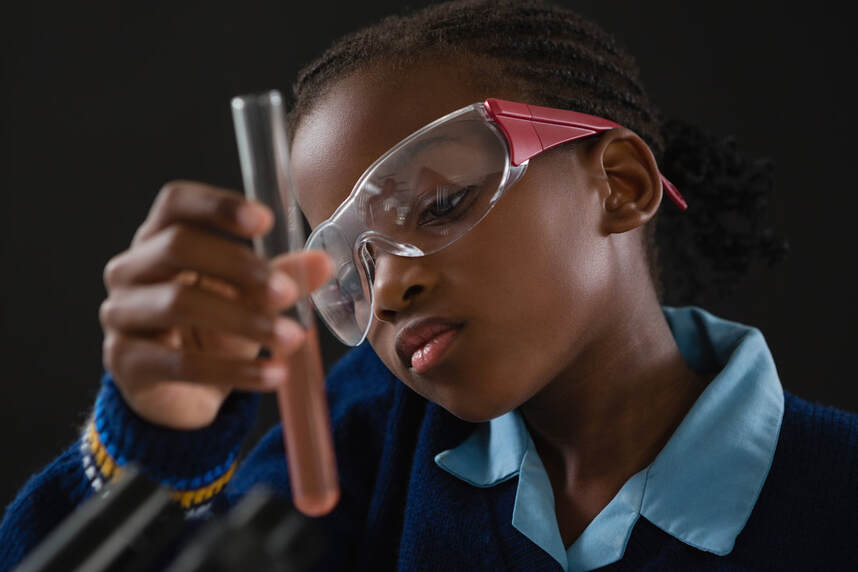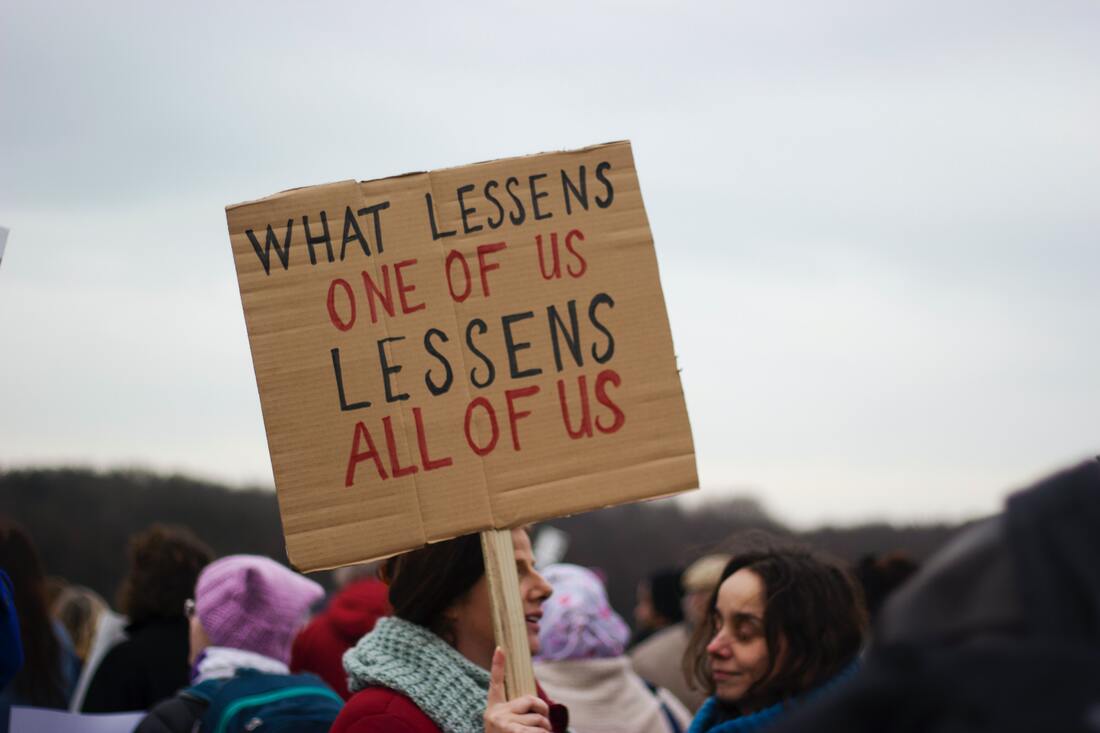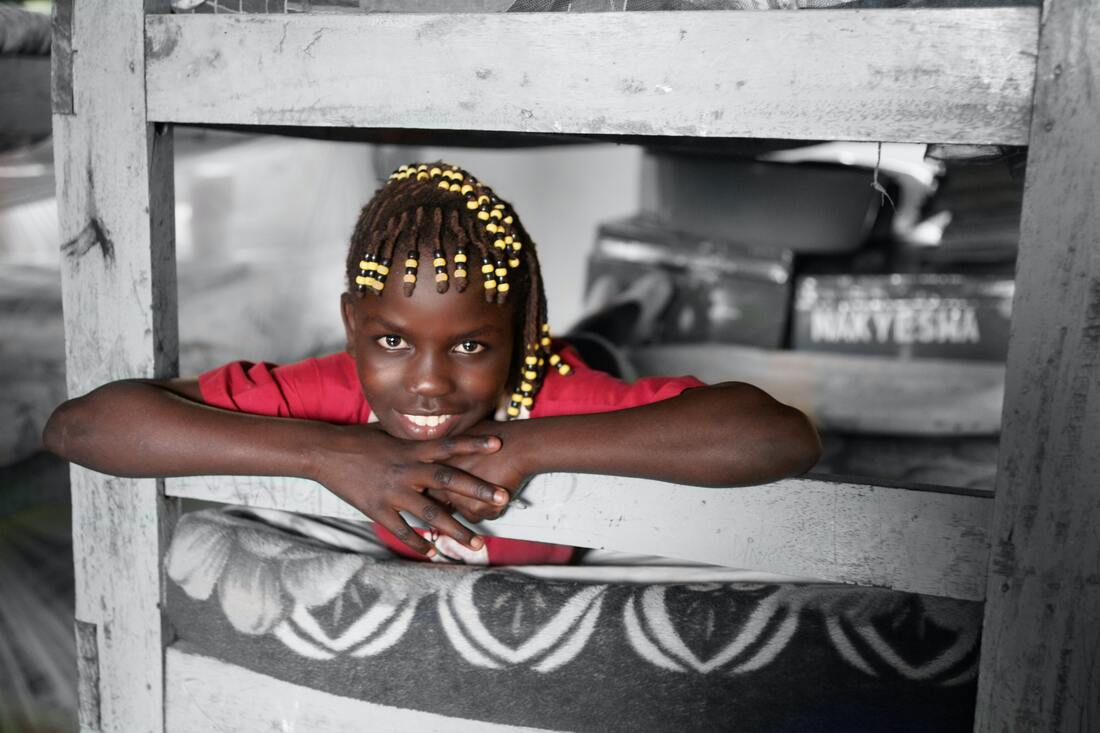Blog |
Blog |
International Girls in ICT Day – 2021What is ICT?Information Communication Technology (ICT) is a broader term for Information Technology (IT), which refers to all communication technologies such as the internet, cell phones, computers, wireless networks, software, video conferencing, middleware, social networking and any other media application, and services that allow users to retrieve, store, transmit, access and manipulate information in the digital format. It also involves media technology convergence such as telephone and computer networks. According to UNESCO, 7 million people work in the ICT sector but only 30% are women. Not only this, only 6% of CEOs at the top 100 global technology companies are women. Women in Europe hold only 11.2% of leadership roles in the tech world. UNESCO shows that a market of up to USD 50-70 billion will open up in the ICT sector if gender equality is achieved. This means more women and girls need to be encouraged to go into ICT. Why should girls go into ICT?There are numerous job opportunities in the ICTs. The sector gives room for a wide range of ICT talents due to the number of job seekers possessing the required technical skills and the digital skills needed by employers. What this means is that women who are highly qualified in technical fields have a notable number of opportunities available to them. Furthermore, ICT companies realise that workforce diversity is good for business and as such are working to attract and promote women. The ICT sector is male-dominated, particularly at senior levels. The companies and organisations are therefore working towards increasing the number of women represented in the sector because when there are more women at the top, financial performance is positively impacted. By going into ICT and supporting the education of women and girls in ICT, the United Nations Sustainable Development Goals (SDGs) is being supported. Particularly, SDG 5 seeks to achieve gender equality and empower all women and girls through, among other domains ICTs. Jobs in the tech sector not only lift women out of poverty but creates a gender-balanced sector that provides more fulfilment at the mid and high level of their careers. Importantly, technology is the language of the future. Therefore, a background in technology enables girls and women to have a role in developing the future. Technology is not restricted to engineers but cuts across various backgrounds from professions such as economics, health, philosophy and production which broadens its applicability. Myths surrounding girls in ICTThe tech environment is not conducive or appealing to women: While truly the tech sector isn’t as appealing to women as it should be, ICT is an exciting, well rewarded, respected career option and is highly lucrative. More women are needed in the sector to change the tech’s culture and image. You can’t pursue a career in ICT without having a tech degree: A lot of digital career options do not require a STEM degree. Many companies just generally look out for people who genuinely want to succeed, have a desire to learn, and possess transferable skills. This means that online courses or a coding club can make a whole world of difference in starting a career in ICT. There’s no career progression so you’ll likely be stuck with writing codes: Working in ICT doesn’t always equate to working for a tech company. Every sector incorporates technology in all aspects of business today which means there are wide roles and numerous opportunities. You can't have a family life, social life and balance a successful tech career: The truth is that every career requires compromise and finding a suitable work/life balance meaning that a career in ICT isn’t different. With good time management skills, positive mindset, and determination, the right balance will be created. How to encourage girls to go into ICT1. Girls can be encouraged to go into ICT by creating events and seminars that are specifically designed to inspire girls to pursue their dream of becoming an ICT professional and encourage careers in ICT fields. This involves a fusion of classroom learning, hands-on experience, and interactions with females in the ICT sector to assure girls of the opportunities inherent in the sector. 2. Teachers also need to take girls on a journey through the digital world from Word to Excel to coding and so on so they can know about the vastness of the sector. This will assure girls that they will not be confined. Furthermore, the use of contexts that can be found in the real world should be encouraged. This means getting girls’ hands-on things that can be replicated in real life such as creating films, creating vlogs, and so on. 3. Another way to encourage girls to go into ICT is to create school clubs in societies that are designed to encourage girls to engage actively in IT. It also allows them to develop their tech skills by partaking in challenges specifically tailored to their interests such as sports, dance, and music. This will have an impact on their confidence and self-esteem. 4. Lastly, ICT education needs to be started early. This means starting from elementary school and putting other noted factors in place to sustain interest into adulthood. See Mansata Kurang an award winning Gambian woman in Tech You'd be interested in our other blogs
3 Comments
Inequality of Women and Girls in ScienceAll over the world, less than 30% of researchers in the science field are women. This shows that there is still a gross underrepresentation of female students and employees in Science, Technology, Engineering, and Mathematics (STEM) related fields (UNESCO, 2019). Less than a third of female students go on to study higher education courses in science subjects like engineering and maths. Furthermore, women in STEM fields publish less than their male counterparts and often receive less pay see weforum.org, 2020. Women and Girls in Science - Saharan Africa A UNESCO report estimates that In Sub-Saharan Africa, only 30% of researchers are women with a gender disparity very clear in disciplines such as mathematics, engineering, and computer science. These women are not only paid less, they do not progress well in their careers as much as their male counterparts. Low-income countries tend to have the lowest ratios of women to men as researchers in the science field. The percentage for some African countries are South Africa 43.7%; Egypt 42.8%; Morocco 30.2%; Senegal 24.9%; Nigeria 23.3%; Rwanda 21.8%, Cameroon 21.8%, Ethiopia 31.3%, Sub-Saharan Africa 31.3%. Gender Biases Discouraging Women and Girls from ScienceThe impediments women and girls face range from social and environmental factors, negative attitudes towards STEM, bias, and discrimination to low self-assessment of girls. There are persistent stereotypes within schools and families that boys are better than girls at science and mathematics and can succeed more in science-based jobs. It is also believed that women cannot benefit from the heavily male-dominated STEM careers and it is not suitable for them as it is not family-friendly. Furthermore, some cultures believe that investing in girls’ education is not as important as that of boys. These all discourage many women and girls from science and it needs to be properly addressed to secure the future of women in science. How to Gain Equal Access and Participation for Women and Girls in ScienceGaining full and equal access and participation for women and girls in science is a long and multifaceted process.
Opportunities in Science for Women and GirlsIt is projected that in the US alone, over 50% of new job growth in the next couple of years will require science and technology degrees. While women and girls have found it difficult to break into many STEM fields in the past, there are lots of self-evident reasons to pursue opportunities in science. Obtaining a degree in science or STEM strongly indicates financial success. The starting and mid-level salaries for STEM careers are higher than non-science jobs. Moving away from the issue of financial gain and job security, science-related fields need women as the majority of people in this field are men. This means that the area is lacking the unique perspective, experience, and creativity of the other half of the population. How to Break the Barriers and Overcoming Challenges in Pursuing a Career in ScienceOther than being determined in the face of daunting challenges and obstacles:
You'd be interested in our other blogs Join us to place girls on the path to success through educationEnding Gender-Based ViolenceWhat Is Violence Against Women?Violence against women is any act of gender-based violence that results in or is likely to result in physical, sexual, or mental harm or suffering to women, including threats of such acts, coercion or arbitrary deprivation of liberty, whether occurring in public or in private life. It is rooted in the gender inequality that women face throughout their lives from childhood through to their old age. Violence against women comes in many forms; physical, emotional, verbal, and many more. It can come through different channels including intimate partner violence, workplace violence, sexual violence, family, and even societal violence. Gender inequality and norms play a big role in the acceptability of violence against women and are a root cause of violence against women.  Photo by Micheile Henderson on Unsplash Why Is Violence Against Women Prevalent?There are various risk factors that contribute to the prevalence of violence against women, such as:
How To Eliminate Gender-Based Violence From National And International LevelsViolence against women and girls is rooted in gender-based discrimination, social norms that accept violence, and gender stereotypes that continue those cycles of violence. To date, efforts to eliminate violence against women and girls have mainly focused on responding to and providing services to survivors of violence. However, prevention which addresses the structural causes, as well as the risk and protective factors associated with violence is pivotal to eliminating violence against women and girls completely. Prevention is the only way to stop violence before it even occurs. It requires political commitment, implementing laws that promote gender equality, investing in women’s organisations, and addressing the multiple forms of discrimination women face daily.  Photo by Sydney Sims on Unsplash Other ways to eliminate violence against women includes the following:
Join Us to Educate Girls to Eliminate Gender-Based Violence Photo by bill wegener on Unsplash Education can contribute towards the eradication of violence against women and girls. An educated girl has the power to speak up herself. Join us to give girls a voice.
International Day of The Girl Child 2020My Voice, Our Equal FutureIt is a known fact that girls are experts on their own needs and unique realities and all they need is the right support made up of opportunities and skills to make their voices heard. Without this, it is impossible to know exactly what a girl believes is best for her immediate and near future. This is why it is important to give girls power and a voice and to listen to them when they speak. Why The Voices Of Girls Matter?The voices of girls matter because by giving a girl a voice, she can express herself and limits are removed. There is more participation in decision making about her life; her choices are broadened and ultimately, the quality of education and enlightenment improves. When a girl has a voice, she can make changes in her community; lead, challenge, push boundaries and improve the lives of those around her by inspiring them. What It Means For Girls To Have A Voice?Giving girls a voice includes empowering girls and women such that they can participate in decision making at private and public levels and access to resources are no longer one sided (in favour of the male gender) so that both genders become equal participants in leading a productive and reproductive life. When she talks, the world listens. How Education Can Give Girls A voice?Every child can reach their full potential through access to education. Without education, girls are exposed and vulnerable and cannot learn how to actualise their ideas and dreams. Education therefore provides the foundation upon which boundless opportunities for future generations of women is built. Education gives girls a voice because education is key to addressing poverty and fighting disease. An educated woman is an empowered woman that can use her voice to effectively contribute to society, the economy and transforms her family and community through her choices. Being in school makes a girl aware of her rights and improves her own health which in turn affects her family positively. Education also gives girls the confidence to speak up and increases the probability of them being heard. By giving women and girls a voice, they can join the campaign for equality. In order to support girls' education, it is important to go beyond providing learning opportunities, it requires keeping girls safe and protecting them from all forms of violence within and outside their places of learning. Importance Of Our Equal FutureAn equal future is one in which there is gender equality. Gender equality goes beyond being a fundamental human right, it is the bedrock of a peaceful, prosperous and sustainable world. In an ideal world, gender equality should be the norm. Reducing inequality makes economies stronger and builds societies that are stable and resilient allowing everyone equal opportunity to fulfil their potential. An equal future is one where girls and boys enjoy socially valued goods, opportunities and resources and rewards the same way. It does not mean that men and women become the same; it just means that access to opportunities does not depend on gender. An equal future by giving girls a voice is linked to the realisation of basic human rights for all. It is a future in which girls and boys enjoy the same opportunities, obligations and rights in all areas of life. There is equal distribution of power and influence and equal opportunity for financial independence through work or business. Both genders enjoy equal access to education and the chance to build up on their personal talents, interests and ambitions; share responsibility for the children and the home and are free from gender-based violence both at home and at work. Lastly, both genders are completely free from coercion and intimidation in an equal future. From £10 a month, you can give a girl a voice through education. Find out how to sponsor a girl.
|
Archives
March 2024
Categories
All
|
|
The SaGG Foundation (Sponsor a Gambian Girl) is a girl’s education movement, with aim of championing the cause for girl child education in The Gambia. Education is a basic human right; our vision is to advocate and champion for girls' education.
|
TAKE aCTION |
About us |
|
